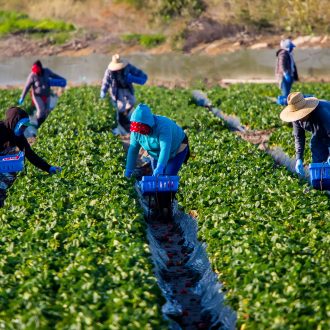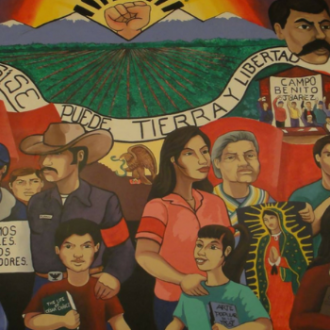
“It is ironic that those who till the soil, cultivate and harvest the fruits, vegetables, and other foods that fill your tables with abundance have nothing left for themselves.” -Cesar Chavez
Third World Housing Conditions
- WRAL Documentary on Farmworker Housing in NC – August 2005 Powerful series showing farm worker housing conditions in NC.
- In a 1998 front-page article, the New York Times reported: “Three decades after Cesar Chavez made the shocking conditions of migrant workers a national cause, more farm workers than ever are living in squalor.” Approximately 800,000 farm workers nationwide lack adequate shelter, according to the Housing Assistance Council, a Washington-based consulting group that studies rural housing. (Steven Greenhouse, “As U.S. Economy Booms, Housing For Migrant Workers Worsens.” New York Times. May 31, 1998.)
- The New York Times also reported that: “The housing shortage (for farm workers) is so severe that in harvest time visits to farming communities up and down both coasts…workers were found packed 10-12 into trailers, and sleeping in garages, tool sheds, caves, fields and parking lots. Along the Columbia River in Mattawa, Washington, dozens of Mexicans up for the cherry harvest slept in crude tents and lean-tos. In Belle Glade, Florida, hundreds of decrepit shacks have been demolished, only to be replaced by ramshackle rooming houses.” (Steven Greenhouse, “As U.S. Economy Booms, Housing For Migrant Workers Worsens.” New York Times. May 31, 1998.)
- The same report stated: “Over the past decade, the federal and state governments, working with growers, have built tens of thousands of housing units for migrants. But those units usually go to families, citizens and legal immigrants, rarely benefiting several large groups facing the worst circumstances: single men and women, illegal immigrants and workers who move from harvest to harvest.” (Steven Greenhouse, “As U.S. Economy Booms, Housing For Migrant Workers Worsens.” New York Times. May 31, 1998.)
- An estimated 2,300-plus homeless farmworkers, nursery workers, landscapers, day laborers and others-nearly one-fourth of San Diego County’s homeless population-live in the county year-round, according to San Diego’s Regional Task Force on the Homeless. Many are undocumented, though not all. (“The not-so-great outdoors. More than 2,300 homeless agricultural workers, others said to be living in canyons of San Diego County.” By Leslie Berestein. San Diego Union-Tribune. June 4, 2006.)
- There are also approximately 100-150 farm worker camps located throughout San Diego County, CA. These encampments range in size from a few people to a few hundred and are frequently found in fields, hillsides, canyons, ravines and riverbeds. The camps are located primarily in the North County, along the coastal region, in the northern part of the city of San Diego and adjacent to farming operations where the workers regularly seek day labor. (“Regional Housing Needs Statement-San Diego Region.” San Diego Association of Governments, June, 1999; “San Diego County’s Homeless Profile,” Regional Task Force on the Homeless.)



